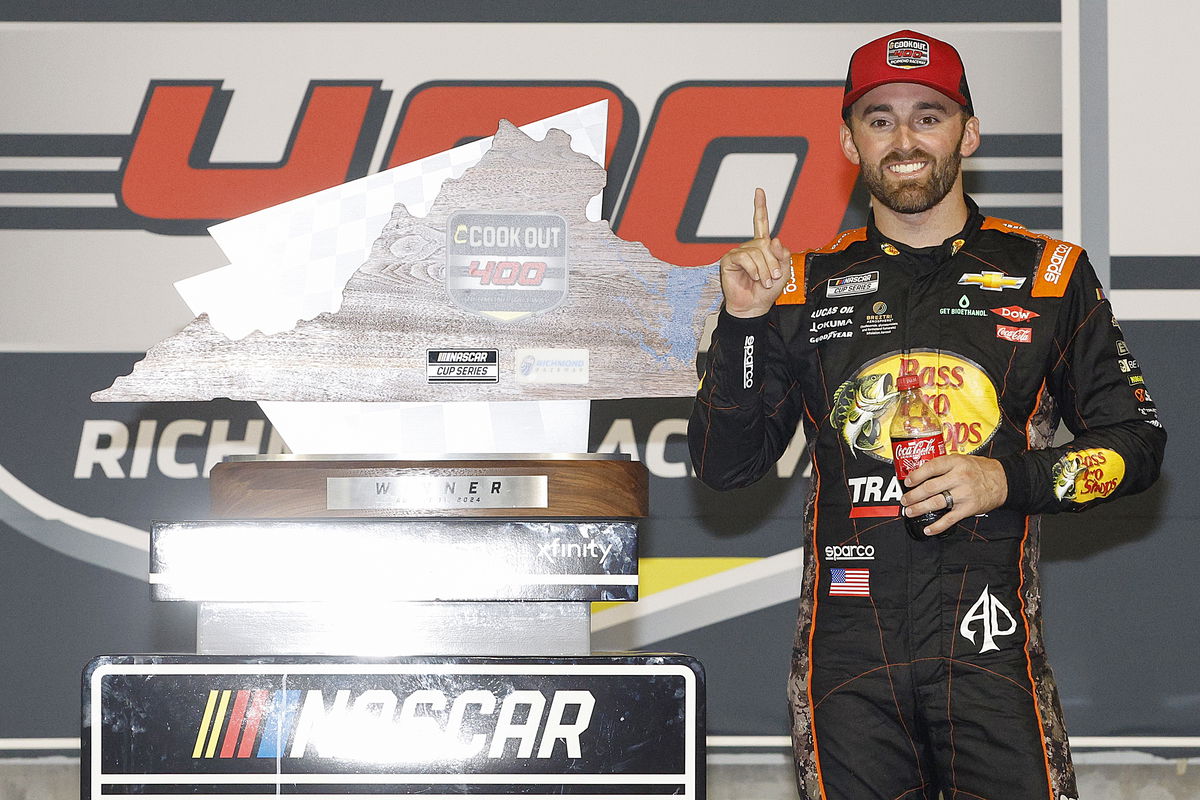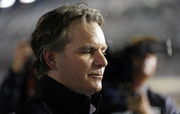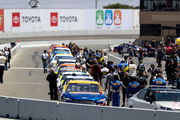
Getty
RICHMOND, VIRGINIA – AUGUST 11: Austin Dillon, driver of the #3 Bass Pro Shops Chevrolet, celebrates in victory lane after winning the NASCAR Cup Series Cook Out 400 at Richmond Raceway on August 11, 2024 in Richmond, Virginia. (Photo by Sean Gardner/Getty Images)

Getty
RICHMOND, VIRGINIA – AUGUST 11: Austin Dillon, driver of the #3 Bass Pro Shops Chevrolet, celebrates in victory lane after winning the NASCAR Cup Series Cook Out 400 at Richmond Raceway on August 11, 2024 in Richmond, Virginia. (Photo by Sean Gardner/Getty Images)
Austin Dillon’s journey to NASCAR stardom has been profoundly influenced by his upbringing in the racing world. Growing up in the shadow of his grandfather, Richard Childress, and witnessing the legendary Dale Earnhardt Sr., it all honed Dillon’s innate ability to read a track’s nuances and adapt his driving style accordingly. However, despite this rich background, Dillon considered Richmond Raceway his worst track early in his career.
Watch What’s Trending Now!
If we look at Dillon’s recent performance at Richmond in the 2025 Cook Out 400, it marked a significant turnaround. Securing his sixth career NASCAR Cup Series victory, he became the first driver in 15 years to win consecutive Cook Out 400 races at Richmond. So, how did Dillon change his Richmond fate?
ADVERTISEMENT
Austin Dillon’s Richmond revival – from skepticism to mastery
On the recent episode of the Dale Jr Download, Dale Earnhardt Jr. inquired about what makes Richmond Raceway favorable for Dillon. And, to which the 35-year-old candidly admitted, “I have a unique line there.“
This revelation sheds light on Dillon’s distinctive approach to the track. “I feel like for whatever reason, the lower I can be, it just helps me from a drive standpoint,” he noted. Now, this low-line strategy allows Dillon to maintain better control and consistency, especially as the race progresses and the track’s rubber builds up. However, his ability to adapt to the track’s evolving conditions gives him a competitive edge.
Dillon’s performance at Richmond in the 2025 Cook Out 400 exemplified the effectiveness of his unique approach. Leading 107 laps and finishing 2.471 seconds ahead of second-place finisher Alex Bowman, Dillon’s victory was both commanding and emotional, especially considering he competed with a broken rib.
ADVERTISEMENT
This triumph not only secured his place in the 16-driver playoff field but also highlighted his growth and adaptability as a driver. The victory was particularly significant as it secured his place in the 16-driver playoff field, elevating him from 28th position in the standings before the race to a championship berth at the checkered flag.
Reflecting on his journey, Dillon acknowledged the challenges he initially faced at Richmond in the past. He shared, “Richmond… it was my worst track when I first started racing in Xfinity Series. I couldn’t… I was like, man, this is… I don’t know what to do here.”
ADVERTISEMENT
However, through perseverance and strategic adjustments, Dillon transformed his perceived weakness into a strength. This turnaround underscores the dynamic nature of a driver’s relationship with a venue and emphasizes the importance of continuous learning and adaptation in NASCAR.
Top Stories
Dale Earnhardt’s Grandson’s NASCAR Future Remains Unhindered Despite Major Team Rebranding Ahead of 2026

Richard Childress’ Champion Driver Joins Forces with HMS Crew Chief to Make Last Minute Chili Bowl Entry

Jeff Gordon’s NASCAR Rival Issues Public Verdict Years After His Apology

Cup Legend to Step Down From His Role as NASCAR Organization Names New Executive Leader

Ross Chastain Recalls the Relentless Grind That Kept His NASCAR Dream Alive After Sponsorship Spin-off

What fueled Dillon’s Richmond redemption?
Following the Richmond win, Dillon reflected on the importance of his grandfather, Richard Childress, and how a rare, fiery meltdown at Dover earlier in the season lit a spark for the team.
ADVERTISEMENT
As Dillon recounted on the post-race press conference, “He doesn’t get over those types of things. Hopefully, this lets him sleep at night again to that point because this sport is special. It’s given our family a living and a lot of other families a living.” As Daytona is just around the corner, this spirit might be beneficial for the whole team.
The Dover incident served as a catalyst for Richard Childress Racing. Dillon explained on the Happy Hour Podcast with Kevin Harvick, “We struggle at Dover. I’ve never felt good there in a race car. After Dover, he kind of let it out in the media that, ‘Hey, we’ve gotta have better race cars.’ … But it felt good for me because he was back in the driver’s seat, and you want that from your owner.”
This rare public criticism pushed RCR to reorganize, bringing in new leadership, including Richard Boswell, Johnny Klausmeier, and Mike Verlander, which ultimately strengthened the team’s execution and car performance heading into Richmond.
ADVERTISEMENT
At Richmond, Dillon’s race was a textbook example of strategic mastery under pressure. This clean, controversy-free win not only ended a 37-race winless streak but also served as a redemption story, balancing family legacy with professional accomplishment.
ADVERTISEMENT
ADVERTISEMENT
ADVERTISEMENT

